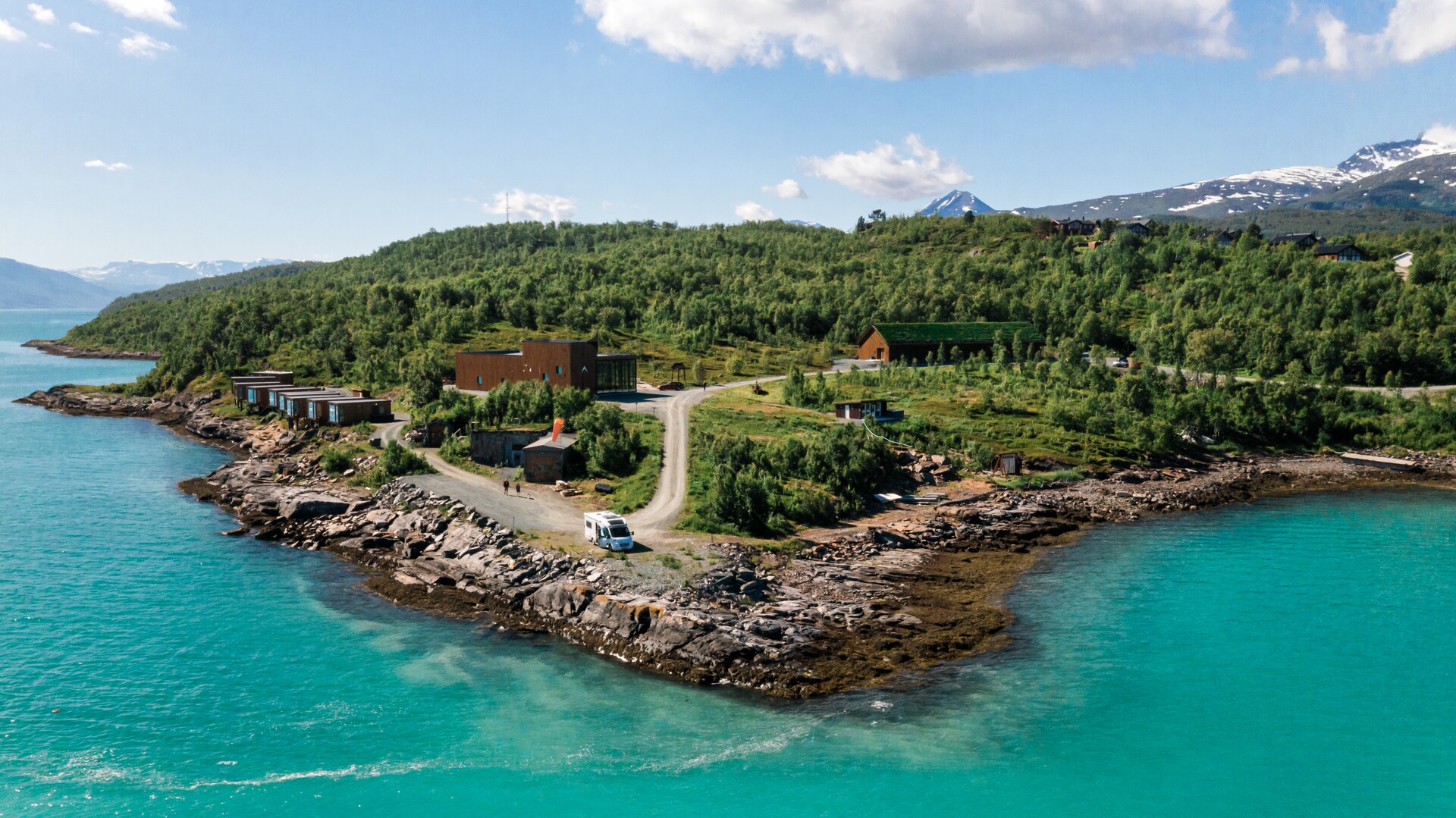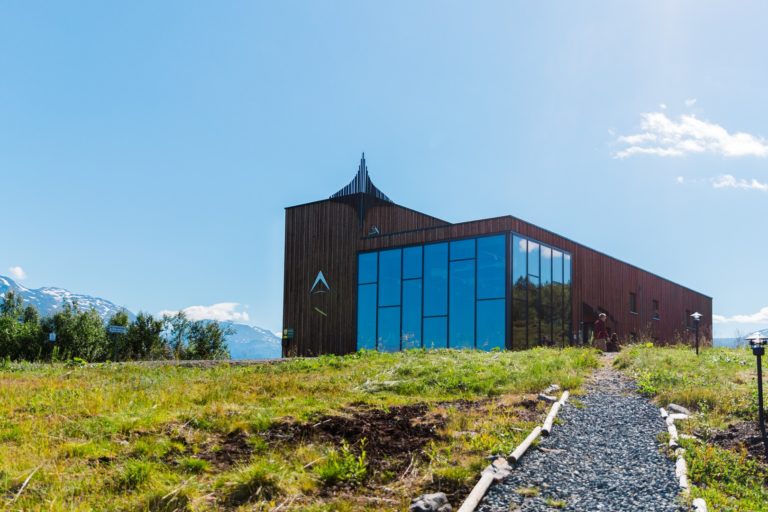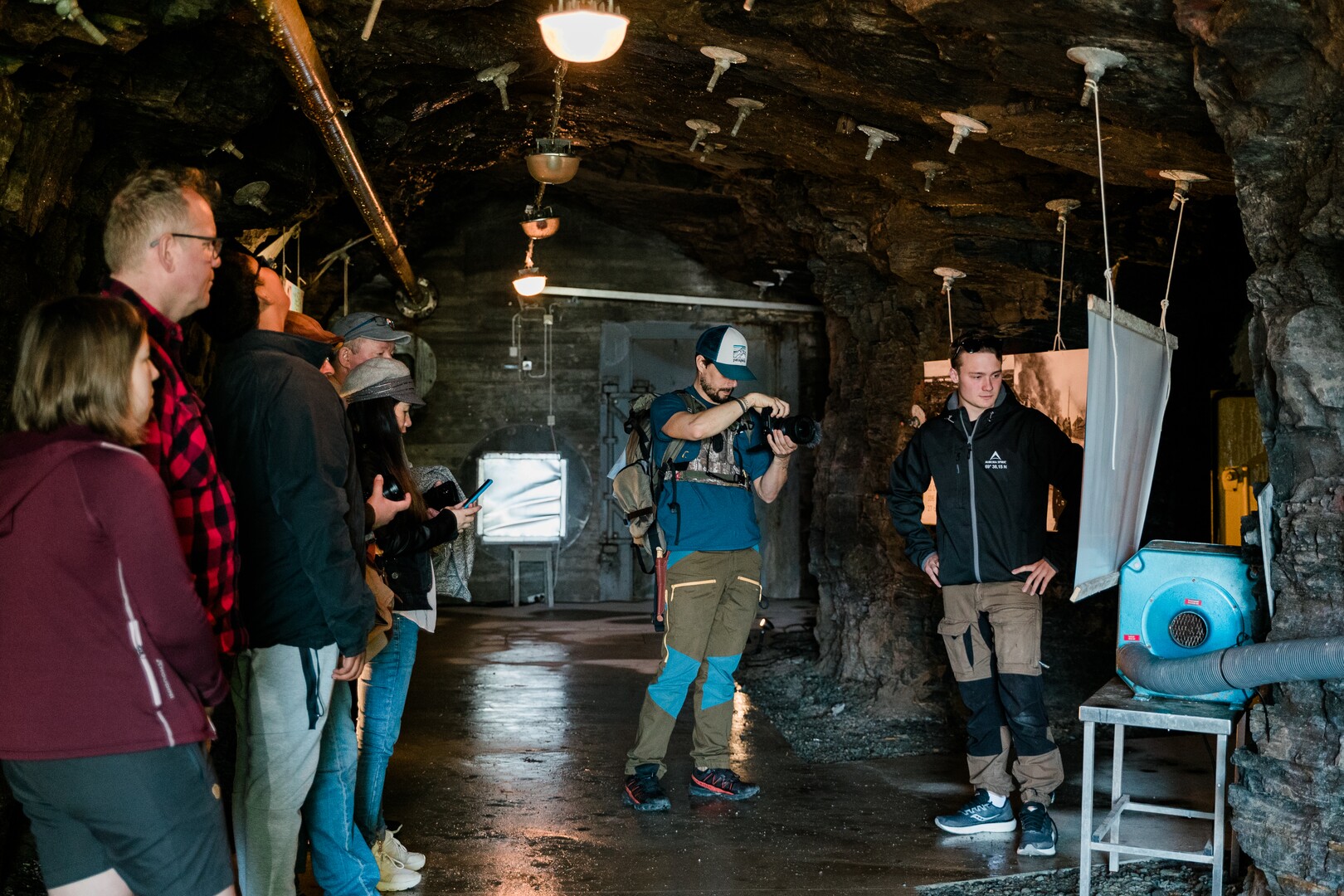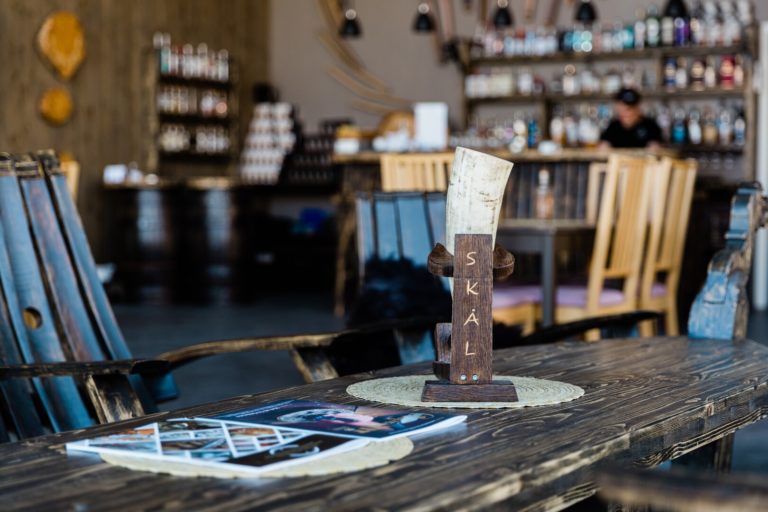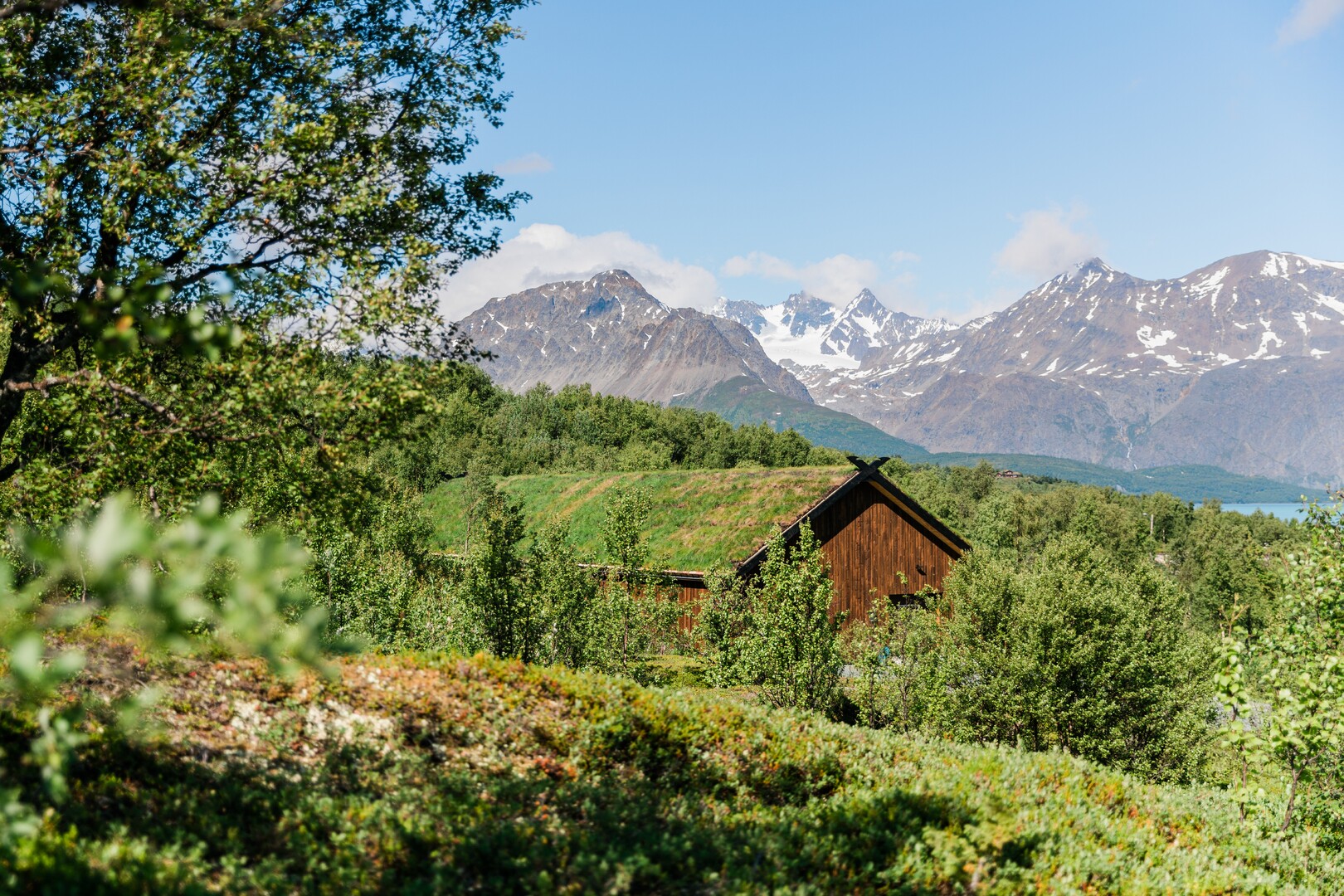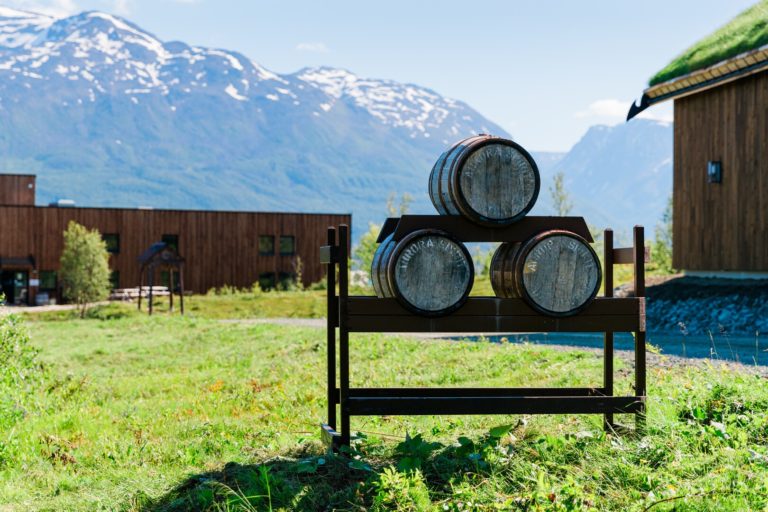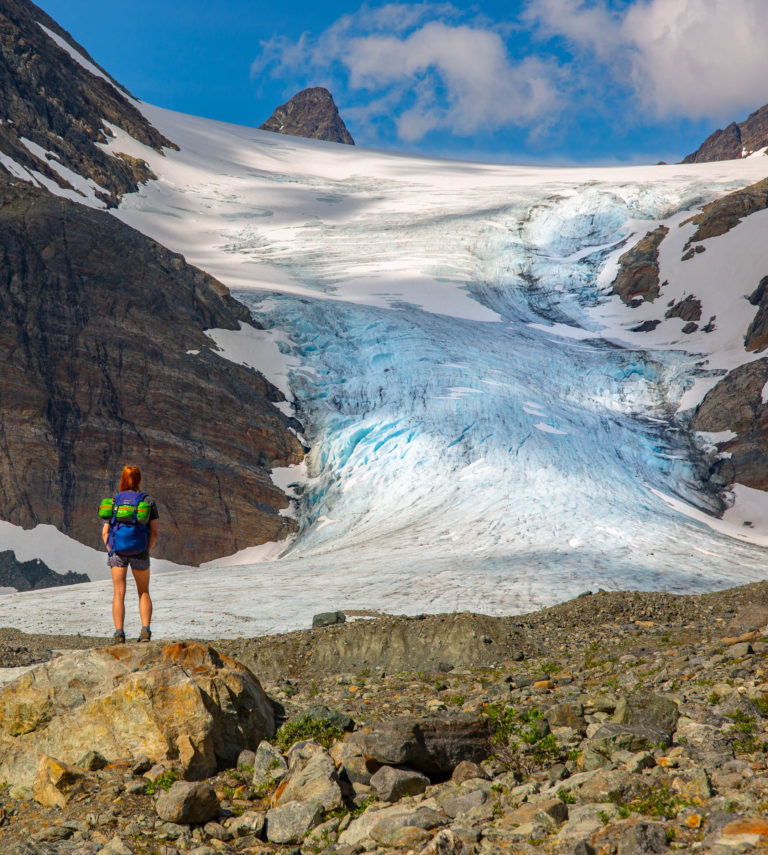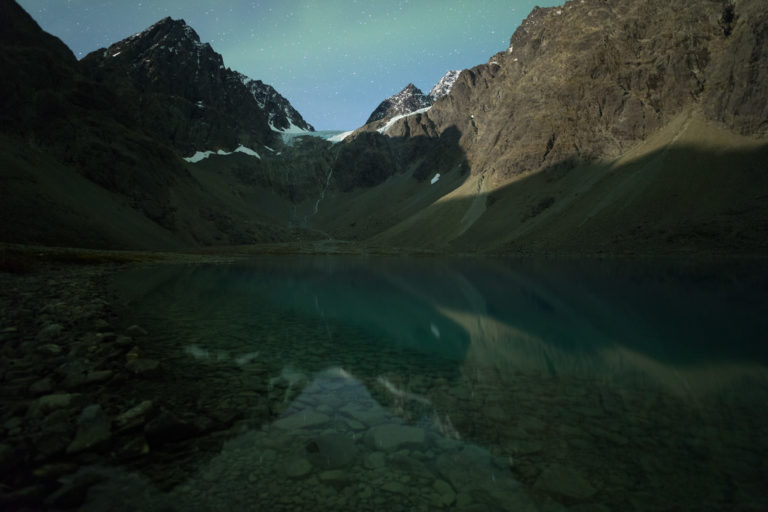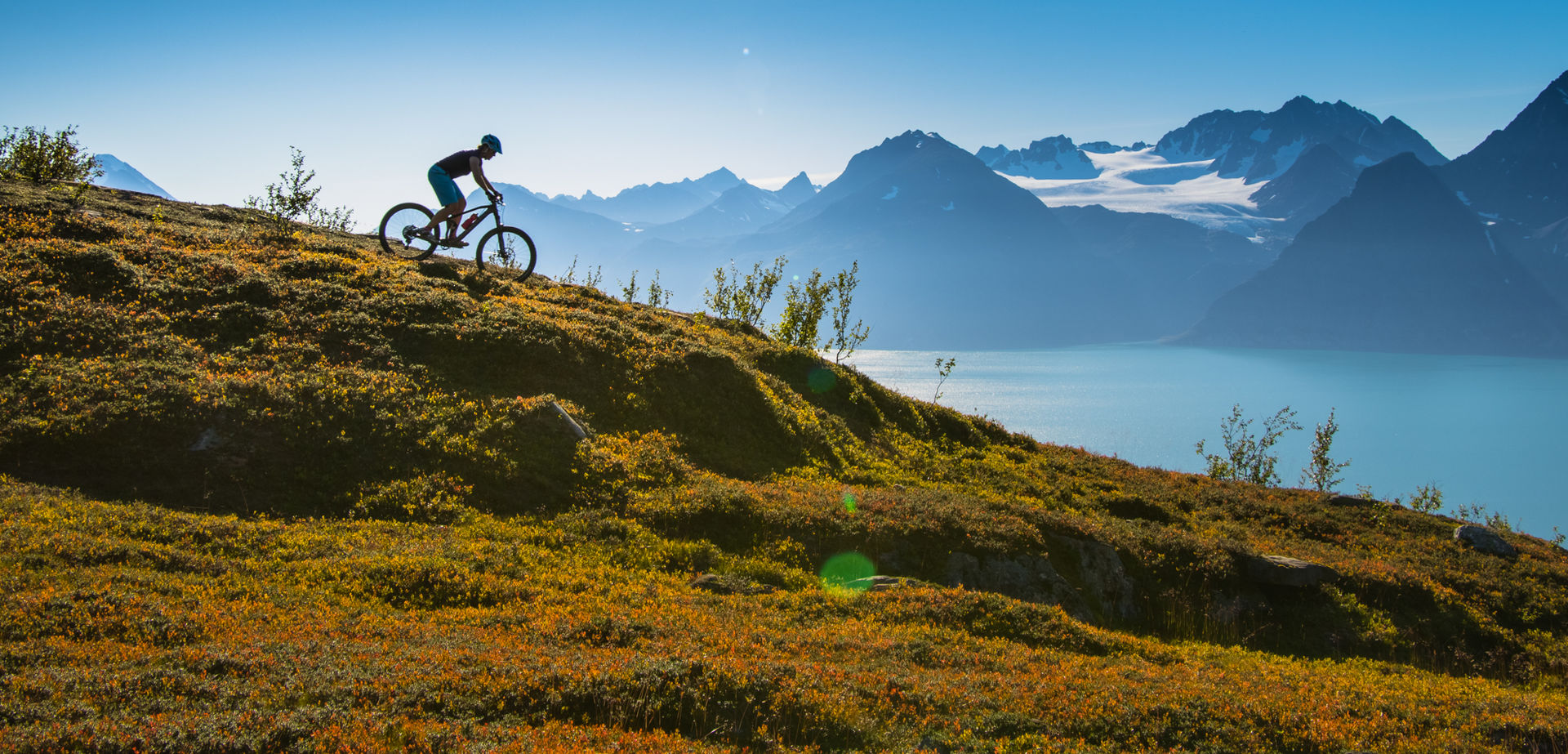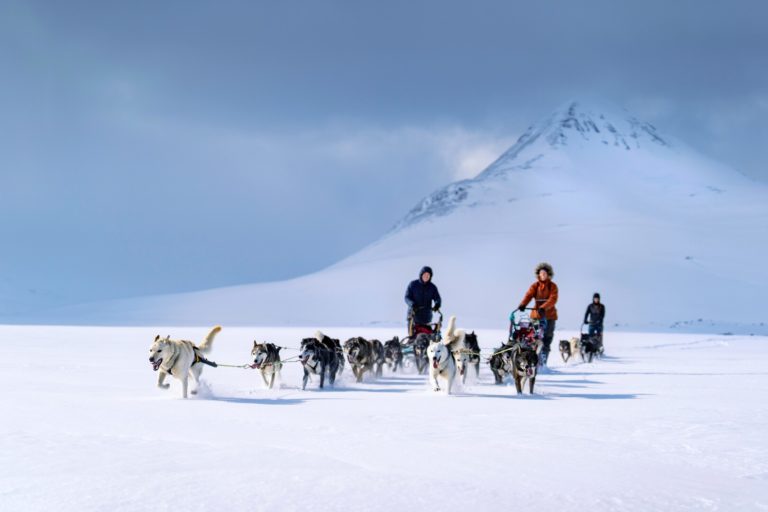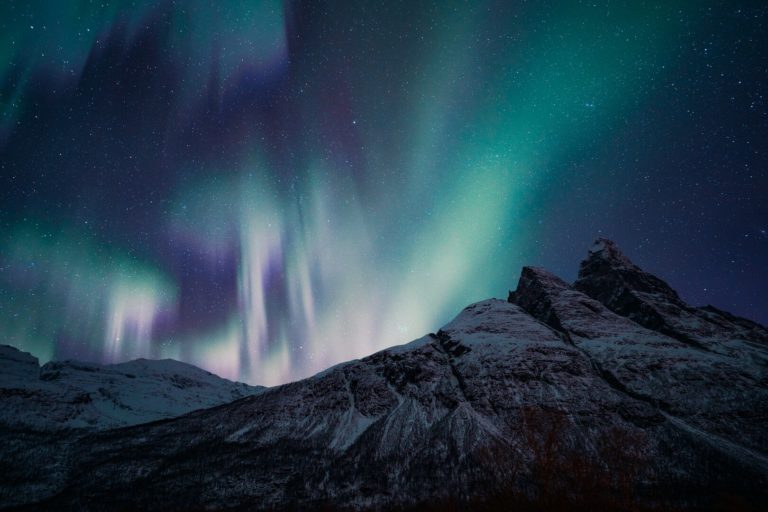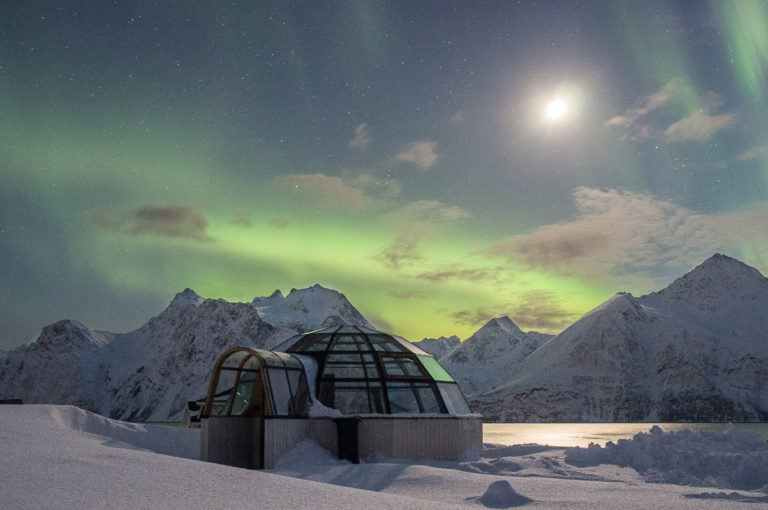Aurora Spirit is the world’s northernmost distillery, producing spirits under the brand name Bivrost. Located in Årøybukt, it is directly by the Lyngen Fjord and under the Lyngen Alps. A young distillery – the first whisky was distilled in the winter of 2016-18 – it is not bound by convention. Instead, it can experiment with ingredients from the surrounding landscape: herbs, berries and most notably the glacier water from the Lyngen Alps. Inspired by the wondrous worlds of the Norse gods, unique and award-winning flavours are developed.
Årøybukt is Full of History
The location itself is interesting; during the Second World War, the German occupiers built a fort here, employing Soviet prisoners of war working under harsh conditions. After the war, the Norwegian army took over, building long underground tunnels. At the end of the Cold War, the site was closed down and sold. The reason for all this military interest is obvious once there, from this headland one overlooks the whole Lyngen Fjord. The tunnels are today used to store casks filled with spirits, and post-war houses painted in military dark green can be found around the area.
A Guided Tour Puts it all Together
A small group of international guests went on tour with me. It was all rather straightforward, with modern, sleek and clean production facilities. A fun introduction was a wall with wooden herb containers. We were invited to smell the various containers, guessing the tastes. Caraway was easy to smell, the rich smell of barley more difficult to spot. After all, your nose is crucial when producing spirits. By the way, we also admired the many awards granted to the various whiskies, vodkas and gins by international magazines. The small distillery has made a name out there.
Whisky Involves many Processes before Distillation
Barley, the basis of whisky, is hard work. After being soaked in water, the barley is left to germinate for some time. This allows the seeds to sprout, and the process is known as malting. To stop the process, the malt is placed in a kiln, a sort of oven, where it is dried at a low temperature. The malt – as it is now called – is crushed and mixed with hot water into a liquid called wort. Yeast is added, and it is left to ferment, turning barley sugars into alcohol. This liquid, called wash, is what the distillery turns into whisky.
There are Two Different Stills
We entered the distillery itself. Here, there were two stills – distillation apparatuses. One is a pot still – a simpler still used for flavoured liquors like gin and aquavit. If one adds juniper, berries or herbs to a gin and distils it multiple times, the aromas will be lost. One thus uses a still with a single chamber. Also, the fine aroma of barley and maybe peat in whisky shouldn’t be ruined by over-distillation. With a vodka, however, purity of taste is exactly what is desired. The vodka is thus distilled through many chambers and comes out clear as water with no aftertaste. For that, a towering column still with many chambers is used. In the distillery, you can admire both.
Distinguish Between the Head, the Heart and the Tail
During the distilling process, the liquids come in three fractions. The head– methanol – comes first, due to its low boiling point. Methanol is not suited to drink but can be used for cleaning. Then comes the heart – which is the ethanol we consume as spirit. Finally, the tail comes out, which again is not suited for consumption. It is often used in paint and varnish. A young and experimental distillery, Aurora Spirit has had fun distilling many substances, the most surprising being prawns. After all, the Lyngenfjord is known for its succulent prawns.
The Magic Happens in the Store Room
Our guide said enthusiastically, as we crossed the yard to the storage reminiscent of a Viking longhouse: “this is where the magic happens”. When the door opened, we saw casks from floor to ceiling. Here the good stuff is left to ripen. Whiskies are clear when first stored in barrels and then take on the colour from the casks as they age. The barrels are stored in a solera system where casks with aged products are refilled with younger ones, creating a consistent taste and quality. A bit of the cask content evaporates every year, which is usually called the angel’s share. Faithful to the old gods, it is of course called Odin’s share at Aurora Spirit.
Different Casks Create Variation
Getting good casks is difficult these days; they go for high prices on eBay. At Aurora Spirit, many different casks are found, made from different types of wood. As the distillery is not bound by traditions, they can play and experiment. There are quite a few sherry casks, along with American bourbon casks. One of the more special ones is a Mexican cask, used to store Mezcal, distilled from agave. Unused casks are filled with water to keep them tight, tending them is an art in itself.
The Tasting at the End is the Spirit on Top
After a short hour, we sat down for the tasting. Three shot glasses were ready for us, and we were told that we all have a dominant nostril, just as we have a dominant hand. I wasn’t aware that I am right-nostriled. And – surprising to me – I could distinguish between several of the berries and herbs in an Arctic gin just by the aroma. The aquavit Midsommarblót (“midsummer feast”) – deemed by some Norwegians as “too weak” – had a musky aroma. Easy on the palate, this is an aquavit for relaxation rather than food accompaniment. As I was driving, I didn’t dare take a sip of any of them, but I felt my nose had learned a little.
There are no Spirits in the Gift Shop
You might expect to be led into a gift shop to stock up on Bivrost bottles at the end. Norway’s strict laws on alcohol distribution, however, make that impossible. One must thus shop in the sterile environment of a Norwegian Vinmonopol, or even in the duty-free shop when leaving Norway. However, you can taste the products in the little bar, unless you’re driving.
Midnight Sun Barley Makes a Difference
Whisky is distilled from malt, which is barley that has undergone a process. A tough grain that can withstand a cool and humid climate, it has been grown in Northern Europe for millennia. However, it has been a while since Northern Norwegians grew barley for porridge and Christmas beer, so barley from the north is hard to come by. For now, Aurora Spirit uses barley from nearby Finland, ripened under the midnight sun. The distillery, however, is part of a project to grow barley in Northern Norway again, and promising crops have been harvested both in Lyngen and Alta.
Gin Takes Flavours from Local Berries and Spices
Gin, named after the juniper berries, is essentially a spirit flavoured with herbs. Juniper grows in abundance in Lyngen. However, at Aurora Spirit, the gin is also flavoured with berries growing in the north, such as blueberries, forest raspberries, the tart lingonberries and the very sought-after molte – cloudberries. Also, herbs, like angelica, the preferred spice of the Vikings, are used.
Aquavit is the Norwegian Favourite
Whenever tasty, hearty traditional food comes on the table in Norway, little dram glasses appear out of nowhere. A sip of aquavit makes heavy food easier to digest and puts everybody in a festive mood. Good aquavit is made from potatoes and then typically spiced with caraway and other spices. Of course, Aurora Spirit has its own take on the aquavit, with new distillations ahead of each festive winter season. Some of the aquavits have a milder taste, more suited for sipping in front of an open fire in winter than with food.
Norse mythology is the Inspiration
Norse mythology is the source of inspiration for the names. One whisky is called Jotunheim. The jötnar were giant and powerful beings competing with the Æsir, gods. Thor, the god of thunder, went to a big party arranged by the jötnar involving a lot of beer. Therefore, this whisky is aged in British stout casks. Múspellsheimr, modern Norwegian Muspelheim, is a world of fire and heat. Thus, a whisky flavoured with peat smoke is called Muspelheim. Even the name Bivrost itself is derived from Norse mythology; it is the bridge between Midgard – the world humans live in – and Asgard – the home of the gods. Wavering, fleeting, and ethereal, it is often interpreted as the Northern Lights, observed above the peaks of the Lyngen Alps most winter nights.
Good to know about Aurora Spirits
Aurora Spirits is found at Årøybukt, a small community on a promontory in the Lyngen Fjord, about 20 minutes’ drive from nearby Lyngseidet. Tromsø is about two hours away.
Consult their website for exact hours, but it is run almost every day of the year.
Nope. Three small drams are too much for the current regulation. There is accommodation on site, so with a bit of planning, that could be solved.
There is comfortable accommodation at Aurora Spirits. Alternatively, look at a range of accommodation in the Lyngenfjord area at the Visit Lyngenfjord website.
The website of Visit Lyngenfjord has attractions, activities, accommodation and dining on their excellent website.
